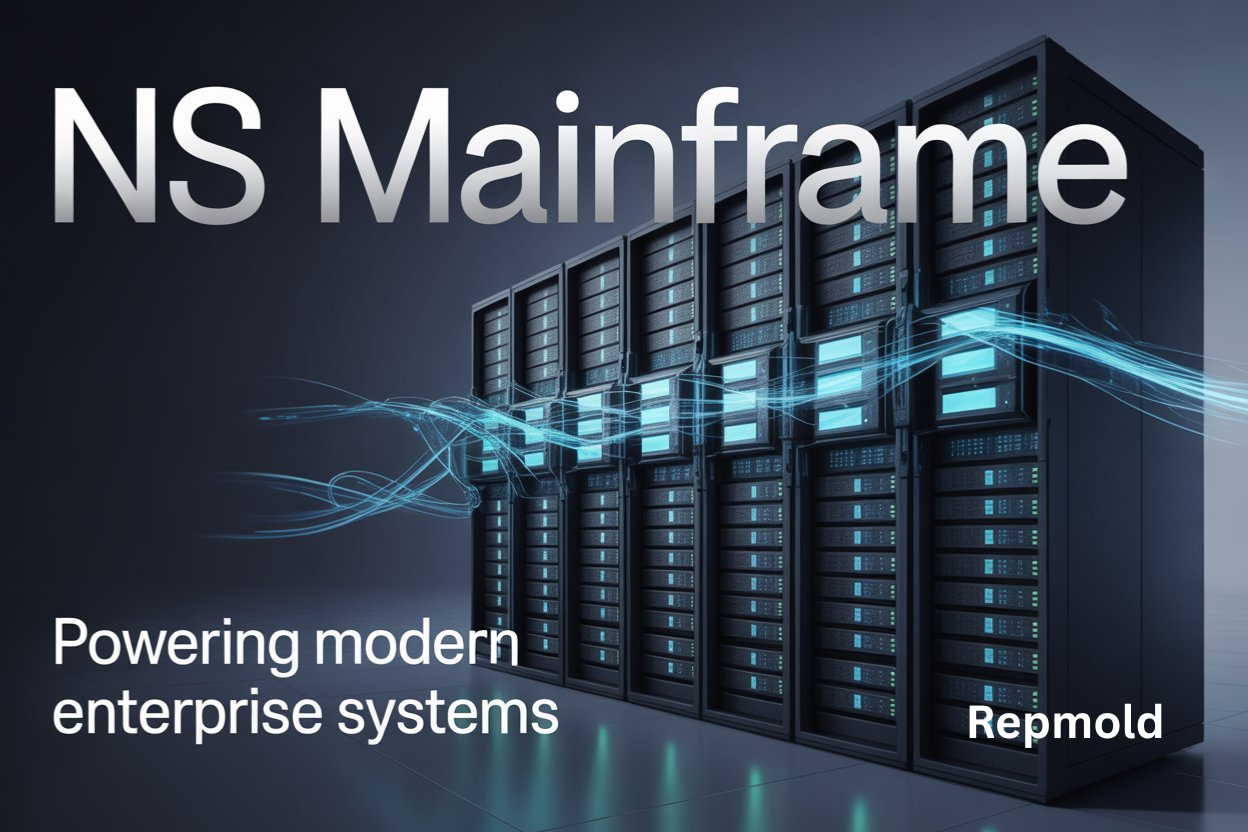Introduction
Discover how NS Mainframe keeps enterprises running smoothly behind the scenes. In today’s fast-paced business world, companies rely on efficient systems to stay competitive. NS Mainframe serves as the backbone of modern enterprise operations, powering critical processes across various industries.
It handles massive amounts of data in real time, ensuring decisions are informed and timely. Moreover, it provides unmatched reliability, allowing businesses to operate without interruptions. Because of its robust architecture, NS Mainframe optimizes workflows and simplifies complex business operations.
From tracking transactions to managing resources, this system ensures consistency and accuracy. Its advanced technology allows seamless integration with modern applications and devices. Furthermore, NS Mainframe supports scalability, enabling enterprises to grow without performance issues.
In short, NS Mainframe is not just a computing system—it is the silent engine driving enterprise success. With its reliability, efficiency, and adaptability, it ensures businesses run smoothly, day after day.
What is NS Mainframe?
NS Mainframe is a powerful computer system designed for large-scale business operations. Simply put, it manages and processes enormous amounts of data efficiently. Today, it serves as the central hub for enterprise systems, connecting departments and workflows seamlessly.
Its role in modern enterprises is crucial. It ensures reliable operations, reduces errors, and supports real-time decision-making. Additionally, NS Mainframe helps businesses optimize resources and improve overall productivity. Without such systems, managing complex tasks would be slow and prone to mistakes.
Mainframes have been around since the 1950s. Early models, like IBM’s 701, were revolutionary for processing large volumes of data. Over decades, mainframes evolved with technology, gaining better speed, reliability, and security. Today’s NS Mainframe combines these advancements with modern computing capabilities.
In summary, NS Mainframe is the backbone of enterprise IT infrastructure. It supports critical processes, integrates with modern applications, and ensures businesses operate smoothly. Its evolution reflects decades of innovation and adaptation in computing technology.
Core Features and Capabilities
NS Mainframe offers high performance and exceptional scalability for enterprises of all sizes. It can handle large-scale operations efficiently, managing thousands of transactions simultaneously. As businesses grow, the system adapts seamlessly to increased workloads.
Reliability and uptime are key strengths of NS Mainframe. With enterprise-grade dependability, it ensures operations run without interruptions. Even during peak demand, the system maintains stability, reducing downtime and errors. This consistency makes it a trusted backbone for critical business processes.
Security and compliance are built into the NS Mainframe architecture. It protects sensitive data using advanced encryption and access controls. Additionally, it meets industry standards, such as GDPR and HIPAA, ensuring regulatory compliance. Businesses can operate confidently knowing their information is safe.
Integration with modern technology further enhances its capabilities. NS Mainframe works with IoT devices, AI systems, cloud platforms, and other enterprise applications. This connectivity allows real-time data exchange and smarter decision-making. As a result, companies can innovate and optimize operations efficiently.
In short, NS Mainframe combines performance, reliability, security, and integration into one robust system. These core features make it essential for modern enterprises seeking efficiency, safety, and scalability.
How NS Mainframe Powers Enterprise Systems
NS Mainframe streamlines data management, allowing businesses to organize information effectively. It processes transactions quickly, reducing delays and improving accuracy across operations. By centralizing data, the system ensures consistency and minimizes errors.
Additionally, NS Mainframe enhances operational efficiency throughout enterprises. It simplifies workflow management and optimizes resource allocation for teams. Employees can access critical information easily, boosting productivity and reducing administrative burdens.
Workforce management becomes more organized with NS Mainframe. It tracks schedules, assignments, and performance metrics in real time. This visibility helps managers make informed staffing decisions efficiently and confidently.
Moreover, NS Mainframe supports real-time decision-making through analytics and automation. It analyzes patterns, predicts outcomes, and provides actionable insights instantly. Automated processes reduce manual work, allowing teams to focus on higher-value tasks.
In summary, NS Mainframe powers enterprise systems by combining efficient data handling, improved operations, and smart decision-making. Its ability to optimize both processes and people makes it indispensable for modern businesses.
Industry Applications of NS Mainframe
NS Mainframe serves a wide range of industries, powering critical operations efficiently.
In Banking & Finance, it ensures secure transactions and manages massive volumes of data. Banks rely on it for real-time processing, reducing errors and delays. Moreover, it supports compliance with financial regulations, protecting sensitive customer information.
In Logistics & Transportation, NS Mainframe optimizes scheduling, tracking, and route management. Companies use it to monitor shipments, prevent delays, and improve delivery efficiency. It also enhances resource planning, ensuring vehicles and personnel are utilized effectively.
In Healthcare, the system manages patient data securely and ensures compliance with regulations. Hospitals and clinics use it to access medical records quickly and safely. Additionally, it helps track appointments, billing, and resource allocation, improving overall care.
For Government & Enterprise Services, NS Mainframe handles payroll, public records, and regulatory operations seamlessly. Agencies rely on it for accurate data processing and reporting. Its reliability ensures essential services continue without interruption, even during peak workloads.
In short, NS Mainframe is versatile, supporting multiple industries by streamlining operations, enhancing security, and boosting efficiency. Its adaptability makes it essential across sectors.
Advantages of Using NS Mainframe
NS Mainframe offers excellent scalability, adapting easily to growing enterprise demands. As companies expand, the system adjusts seamlessly without affecting performance. This flexibility ensures businesses remain efficient at all levels.
High reliability is another key advantage. NS Mainframe guarantees minimal downtime, keeping critical operations running smoothly. Its consistent performance reduces disruptions, allowing teams to focus on productivity.
Centralized management simplifies complex operations. Businesses can control workflows, data, and resources from one hub. This streamlines processes, improves coordination, and reduces administrative overhead effectively.
Additionally, NS Mainframe provides long-term cost-effectiveness. Efficient resource use and reduced downtime lower operational expenses. Over time, businesses save significantly compared to using multiple separate systems.
In summary, NS Mainframe combines scalability, reliability, centralized control, and cost efficiency. These advantages make it a cornerstone for modern enterprise systems.
Challenges and Considerations
Despite its benefits, NS Mainframe comes with certain challenges that businesses must consider.
Implementation and maintenance costs can be high. Enterprises often need significant investment for hardware, software, and support. This initial expense can be a barrier for smaller organizations.
Specialized technical expertise is also required. Managing and operating NS Mainframe systems demands trained professionals. Companies must invest in training or hire skilled staff to ensure smooth operations.
Integration with modern cloud systems and emerging technologies can be complex. Combining legacy mainframes with cloud solutions or AI tools requires careful planning. Without proper integration, businesses risk inefficiencies and system conflicts.
In conclusion, while NS Mainframe delivers substantial advantages, enterprises must plan for costs, expertise, and integration challenges. Addressing these considerations ensures the system delivers maximum value.
Future Trends and Innovations
NS Mainframe is evolving with emerging technologies to meet modern enterprise needs.
Artificial intelligence (AI) and machine learning are transforming mainframe capabilities. They enable automation, predictive analytics, and smarter decision-making. This allows businesses to anticipate issues and respond proactively.
Hybrid cloud integration is becoming increasingly common. It provides flexibility, enhanced accessibility, and seamless data sharing across platforms. Companies can combine mainframe reliability with cloud scalability effectively.
Energy-efficient and sustainable mainframe designs are also gaining focus. Reducing power consumption lowers costs and supports environmental initiatives. Businesses benefit from greener operations without compromising performance.
In summary, future trends in NS Mainframe technology focus on AI, cloud integration, and sustainability. These innovations ensure mainframes remain relevant, efficient, and adaptable for years ahead.
Conclusion
NS Mainframe remains the backbone of modern enterprise systems. It supports critical operations daily. Its reliability, scalability, and efficiency make businesses more productive and competitive.
Moreover, NS Mainframe continues to evolve with new technologies. AI, cloud integration, and sustainability improvements enhance its relevance. Businesses can rely on it for secure, real-time data management and decision-making.
Understanding and embracing mainframe technology is essential for long-term business success. Companies that leverage NS Mainframe gain efficiency, accuracy, and operational resilience. It is not just legacy technology—it is a future-ready solution.
In short, NS Mainframe powers enterprise operations, adapts to modern demands, and ensures businesses thrive in the digital age.

